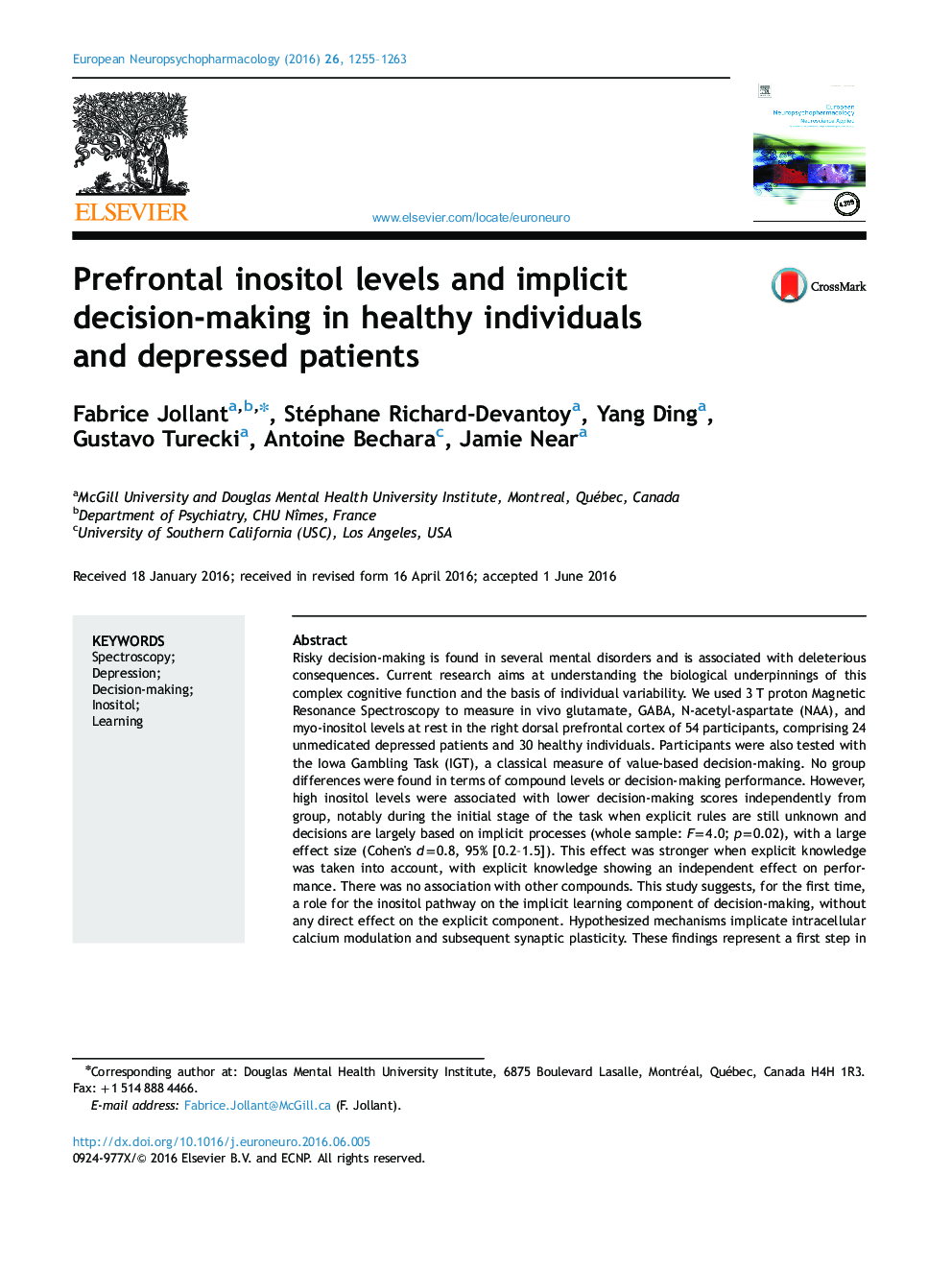| Article ID | Journal | Published Year | Pages | File Type |
|---|---|---|---|---|
| 318689 | European Neuropsychopharmacology | 2016 | 9 Pages |
•The biochemistry of decision-making is not well known.•We used 3 T magnetic resonance spectroscopy in the right dorsal prefrontal cortex.•High at-rest inositol levels were associated with lower decision-making performance.•These findings support a dimensional approach of decision-making.
Risky decision-making is found in several mental disorders and is associated with deleterious consequences. Current research aims at understanding the biological underpinnings of this complex cognitive function and the basis of individual variability. We used 3 T proton Magnetic Resonance Spectroscopy to measure in vivo glutamate, GABA, N-acetyl-aspartate (NAA), and myo-inositol levels at rest in the right dorsal prefrontal cortex of 54 participants, comprising 24 unmedicated depressed patients and 30 healthy individuals. Participants were also tested with the Iowa Gambling Task (IGT), a classical measure of value-based decision-making. No group differences were found in terms of compound levels or decision-making performance. However, high inositol levels were associated with lower decision-making scores independently from group, notably during the initial stage of the task when explicit rules are still unknown and decisions are largely based on implicit processes (whole sample: F=4.0; p=0.02), with a large effect size (Cohen׳s d=0.8, 95% [0.2–1.5]). This effect was stronger when explicit knowledge was taken into account, with explicit knowledge showing an independent effect on performance. There was no association with other compounds. This study suggests, for the first time, a role for the inositol pathway on the implicit learning component of decision-making, without any direct effect on the explicit component. Hypothesized mechanisms implicate intracellular calcium modulation and subsequent synaptic plasticity. These findings represent a first step in the understanding of the biochemical mechanisms underlying decision-making and the identification of therapeutic targets. They also emphasize a dimensional approach in the study of the neurobiological determinants of mental disorders.
